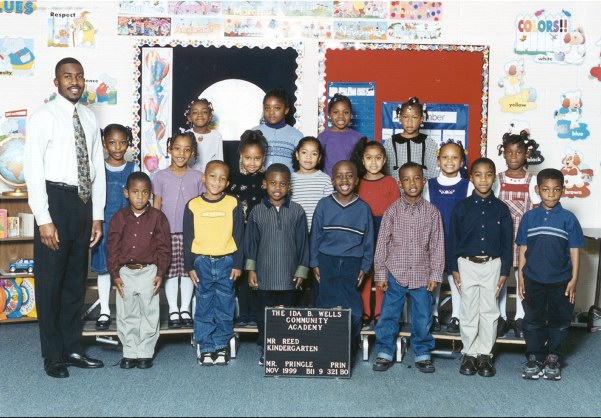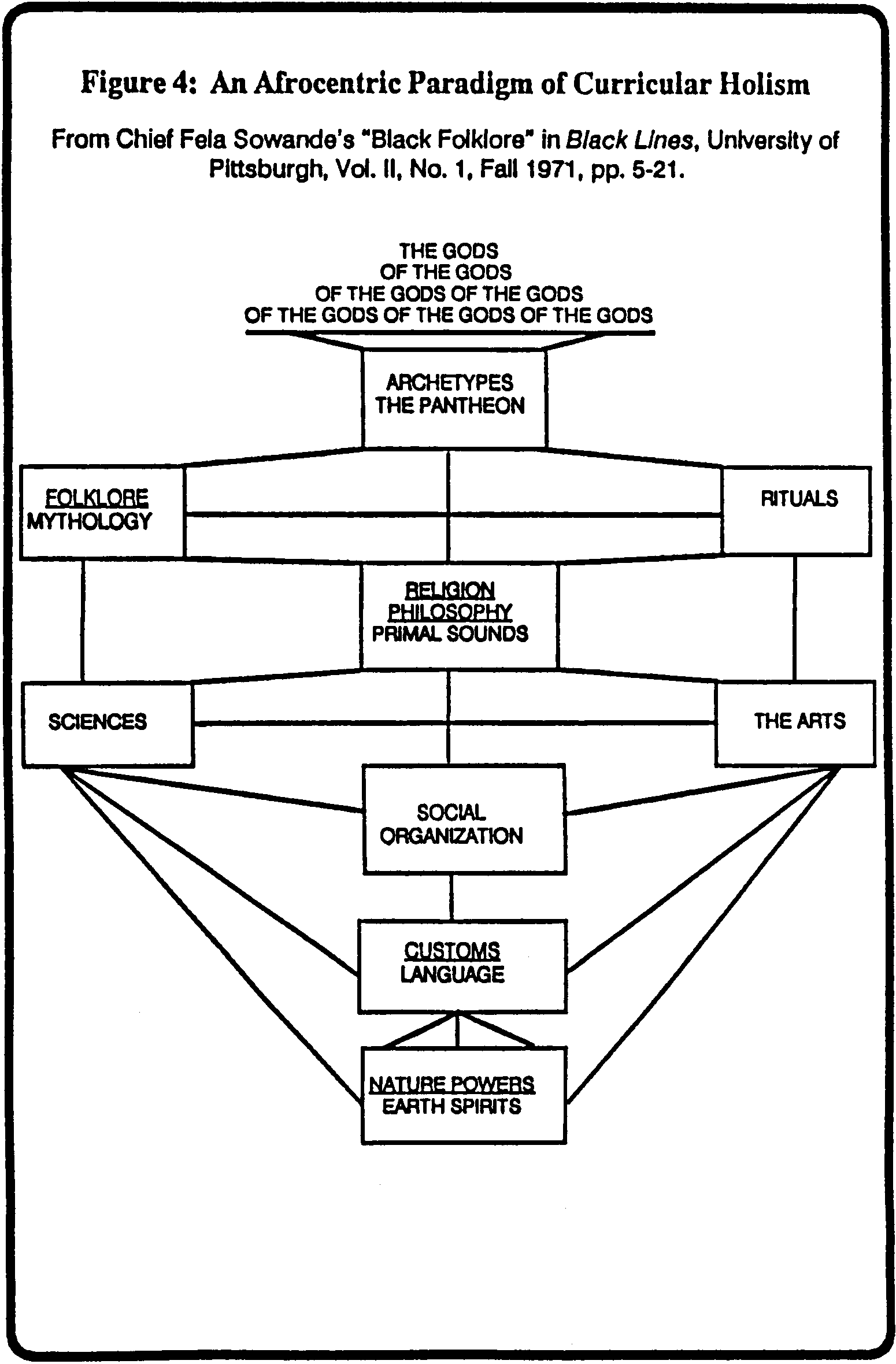 Ida B. Wells-Barnett 1862-1931 The Ida B. Wells Community Academy Hosted by the Antioch Baptist
Church of Akron COUNTY: Summit IRN: 133553 Part I: Annual Report for 1999-2000
The Academy was chartered by the State Department of Education on May 4, 1999, and opened on August 30, 1999 as an independent, nonsectarian and public Community School in Akron, Ohio. It was incorporated as the Ida B. Wells Community Academy, Inc., a nonprofit corporation, on December 29, 1998. The Academy's Learning Center for fiscal year 1999-2000 was located at 1104 Johnston Street, Akron, Ohio 44305-2414 (330.535.5130). Its Administrative Offices were at 395 East Tallmadge Avenue, Akron, Ohio 44310-2352 (330.376.4915). The Learning Center and Administrative Offices moved on August 11, 2000, to the premises of the Antioch Baptist Church of Akron, 670 Wooster Avenue, Akron, Ohio 44307-1868. Telephone numbers, however, remained unchanged – 330.376.4915 and FAX: 330.376.4912. The Internal Revenue Service granted the Academy tax exempt status under section 501(c)(3) on May 19, 2000.
The Academy's mission is to educate young people (K to 6; eventually it will enroll students in grades K to 12) in a holistic educational program that is personalized, problem-posing and problem-solving, centered in the humanities, natural sciences, language arts, social studies (civics), the performing and graphic arts and African and world culture studies. This mission emphasizes passing standard proficiency tests and reuniting traditional subject areas and learning activities so that students are better able to understand the relationship of one subject area to another and education to their present and future lives (see "A Paradigm of Curricular Holism" and "Circles of Continuing Development" below). The Academy was founded to serve low-income and medium income African American, White, Native American, Latin American and Asian students residing within the Akron metropolitan area. Moreover, the Academy addresses its curriculum and educational services also to the needs of underachieving and under represented youths eligible to attend the Akron Public Schools. The recent passage of HB 282 affords the Academy the possibility of enrolling students through an "Interdistrict Transfer Program" who reside outside the Akron School District (see Attachment VIII). Admission is FREE. Busing will be provided by the Akron Public School District. lnterdistrict transfers will NOT to be transported, however. These students' parents will have to arrange for their transportation. At the close of the Academy's first academic year, we convened a Board Retreat led by Mr. Richard Lewis of Case Western Reserve University's Mandel Center to refresh all Governors on the Academy's Mission Statement as well as the Governors' management roles and their need to regularly review the policies that were developed over the year. Of specific interest at this retreat were the Academy's organizational structure and its educational plan. More on this retreat will be dealt with later in this report. A Harmonious Learning Community
Educational PhilosophyThis "Program Harmony Diagram" was first conceptualized by The Academy provides an education that is nurturing, intellectually stimulating and intended to imbue in its students a mutual respect for learning proficiency, competence and the attainment of knowledge of their history, culture, traditions and values. Students will learn to appreciate themselves, their fellow students, their families, and their community. Most importantly, the Academy seeks to establish a Learning Community and environment that is supported by a curriculum that relies on the learners' experiences at home, in their neighborhood, and in the society. It is structured to produce measurable performance outcomes in reading, writing, mathematics, social studies and the natural sciences. The Academy promotes learning activities based on individual student interests and needs and allows students to grow at their own pace and enhance their high achievement expectations. Occasionally, the Academy assesses itself and reports to parents how the overall curricular program and educational process is progressing as well as how well students are performing based on national, state and city norms, if available. The Academy regularly assesses teacher performance, learning obstacles, student rights and responsibilities, student, parental, community and home resources and involvement.
The Academy's educational philosophy emphasizes a program structure and instructional design that mandates these essential ingredients and more:
The Academy's personalized educational program, curricular structure and delivery system are major program elements. The Academy's personalized educational program, curricular structure and delivery system are major program elements. The Academy's emphasis on high academic expectations, moral and social responsibility, and increased proficiency test scores helped influence parents to continue the enrollment of their child(ren). Furthermore, the Academy stressed the involvement of parents in meaningful activities throughout the Academy's startup and operational phases. These activities included teaching, administrative and governance functions, and committee assignments of various sorts, e.g., discipline, curriculum, admission, and faculty hiring. It should be noted here; however, that we were not as successful in this arena as we had hoped to be. More parental and community involvement is desired. The Academy's decision to maintain a low 15 to 1 student to teacher ratio strengthened its efforts to increase these students' educational performance while at the same time diversifying educational content. The Academy's intent is to eventually serve students from Kindergarten to High School. In its first year, which began on August 30, 1999, the Academy enrolled only students in Kindergarten through the 2nd Grade, adding one grade per year during its initial five years of operation. In 2000-2001 the Academy will add the 3rd Grade. During 1999-2000, the number of students the Academy served was limited. The managers of the Academy's startup facility would not allow more than 45 students; 15 students fewer than the contracted number. The Superintendent compromised and determined that the Academy would still have a critical mass of students were it to enroll no fewer than 50. To enroll fewer would have resulted in a shortfall of funds too great to remain fiscally solvent. In 2000-2001 the number of students enrolled will increase to 90 students barring any unforeseen difficulties. During both the 1999-2000 and the 2000-2001 enrollment periods, when these available places are unfilled, students were to be (will be) selected for admission by lot. And enrollment preference given to continuing Academy students and their siblings.
For the five-year contract
period (1999-2004), the Academy has proposed
enrolling students according to the following schedule:
The Academy's instructional philosophy and program structure are open ended so that it can maintain curricular and operational flexibility (see "Circles of Continuing Development" below). [1] The Academy's curricular focus follows the standard school curriculum with one noteworthy exception: The Academy strives to infuse into its curriculum an emphasis on Africa, African America and the world, i.e., this curricular strategy would be particularly inclusive of Native American, Latino and Asian cultural and historical elements. These elements are vital to the correct and diverse education of its enrollees. Most children (and most educated Americans regardless of race) have not been properly exposed to the history, culture and aspirations of the African in America, the largest nonwhite racial group in the United States. This group's history, culture, languages, traditions and contributions to American civilization have been most neglected in school curricula from kindergarten to the PhD. The Academy is designed to correct this inequity by infusing curricular diversity that will not exclude learning about other ethnic or racial groups, particularly Native Americans, Latin Americans and Asians. A review of the Academy's educational philosophy and curricular plan reveals that we approach education from a quality perspective that agrees with Carter G. Woodson's caution in his 1933 classic The Mis-education of the Negro: [2] "The element of race does not enter here. It is merely a matter of exercising common sense in approaching people through their environment in order to deal with conditions as they are rather than as you would like to see them or imagine that they are. There may be a difference in method of attack, but the principle remains the same. . . . History does not furnish a case of the elevation of a people by ignoring the thought and aspirations of the people thus served."  Second Grade Class of 1999-2000. Substitute Instructor: Mr. Perkins B. Pringle. Mr. Pringle is also the Academy's Principal) All Americans, we believe, must learn to live, work and understand each other. This need has been evident, although ignored, since the inception of the nation. The Academy's purpose is to offer a well-balanced education where academic skills are taught along with mutual respect and cooperation, a knowledge of the neighborhood where the students reside, an informed view of their home and the homes of their neighbors, and a realistic and undamaged sense of self. In this way we undergird our efforts to keep the American experiment alive. Governance and Administration The Current Board of Governors [3]
 Pastor J. Wayman Butts, Dr. Edward W. Crosby and Perkins B. Pringle Governors Who Resigned During the Year
(see below for
a complete roster of all faculty and staff hired; copies of resumes and
teaching certificates are
available upon request)
Circle of Continuing Development
Additional Instructional and Support Staff
Kindergarten: 17
Students
First Grade: 14 Students Second Grade: 13 Students
Kindergarten:
2 Withdrawals 6 Suspensions
First Grade: 6 Withdrawals 5 Suspensions Second Grade: 2 Withdrawals 2 Suspensions
Kindergarten:
2
First Grade: 2 Second Grade: 1
1. Dan Aldridge. (1969). Education to Govern, A Philosophy and Program for Learning NOW! (Detroit: Advocators), p. 47. His circular matrix was discussed by the Principal, the Chair of the Curriculum Committee and the Superintendent. Their decision was to put it before the faculty in an in-service training session during the 2000-2001 academic year. A more legible copy of the matrix can be acquired by emailing the Webmaster. 2. Carter G. Woodson, (1933, 1977). Washington, DC: Associated Publishers, Inc., p. xi.
3.
Many of the Governors'
resumes (past and present) have been posted here.
Governors recently admitted to the Board have not yet been entered. NB: The Attachments referred to in
this report may be requested from the Webmaster via an e-mail
indicating which
attachment
is wanted. End of Part I |
Navigational Links
 Back
to Top of this
Page
Back
to Top of this
Page |
 Forward
to Part II: Annual Report Forward
to Part II: Annual Report |
 Return to Home
Page
Return to Home
Page |
 Forward
to Part III: Annual Report Forward
to Part III: Annual Report |
|
|
For More Information Write or Call
Dr. Edward W. Crosby, PhD, Co-Founder, Superintendent
or
Mr. Perkins B. Pringle, MEd, Principal
or
Ms. Angela M. Anderson, MBA
, Business Manager / BoardTreasurer
The Ida B. Wells Community Academy
670 Wooster Avenue
Akron, Ohio 44307-1868
Voice: 330.376.4915 FAX: 330.376.4912
Contact the Webmaster
to give feedback
Click on the World and Sign
the HieroGraphics Online Guestbook
We Are a Quality and Equal Education and Employment Opportunity Institution




